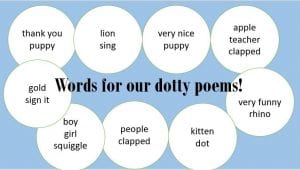http://bit.ly/2Abv09v
We are in week two of the challenge and this week’s post is all about writing quality blog comments. I am adding some of the highlights in this post.
"Here are ten reasons why comments are important:
Week 2's tasks included discussing good commenting skills, creating a ‘How to comment’ page' on their blog and making a set of commenting guidelines, time permitting of course. Kathleen Morris from Australia, who is running the challenge, added this lovely commenting image this week,
Benefits of commenting
This is taken from the Week 2 Blogging Challenge post found at:
http://bit.ly/2Abw6lP
This is taken from the Week 2 Blogging Challenge post found at:
http://bit.ly/2Abw6lP
"Here are ten reasons why comments are important:
- Comments turn your blog from a static space to an interactive space. This means it’s not just you talking. There is interaction.
- Back and forth conversations are fun and you can learn a lot.
- Because comments are not instantaneous (like online chat or text messaging), you can have more time to reflect, research, or think about your response.
- When someone leaves a comment, they can leave feedback, constructive criticism, or give you new ideas. This can help you grow and learn.
- A commenter might suggest something that you didn’t include in your post. You can learn new perspectives.
- When you have an authentic (real) audience, it’s more motivating! You know someone will read your post, so you will probably put more effort into it than if you were just writing something in a notebook.
- Commenting can be an ideal way for busy parents to get involved in the classroom.
- You can learn how to interact politely and how to have conversations.
- You can meet new people and form friendships.
- Students who don’t have their own blogs can enjoy the benefits of blogging by being a participant in the comment section.”
Week 2's tasks included discussing good commenting skills, creating a ‘How to comment’ page' on their blog and making a set of commenting guidelines, time permitting of course. Kathleen Morris from Australia, who is running the challenge, added this lovely commenting image this week,
A video on how to commentThis video is featured on the Edublogs page. I like it! Sling’s class in Canada has completed this must-watch video on commenting.
Interesting pointers from this week's Student Blogging Challenge post
1. Each week the best posts from the previous week's Student Blogging Challenge are featured in the 2018 Student Blogging Challenge Flipboard http://bit.ly/2AbncVf.. Since I only see my classes once a week, we won't have time to do all the lovely activities. We plan to dip in and take out what is important for us.
2. Some teachers like their students to make screencast videos about commenting. This is what Kathleen says about making your own video. "To make the video you could use a free Chrome extension called Screencastify . Loom is another good tool for making screencast videos if you use the Chrome browser. If you use an iPad you can make a screencast without any special app. Tony Vincent shows us how to do that in this graphically."
I had no idea you could do this on an iPad. How awesome!
This week's task for my classes
Write an encouraging post on four blogs from another country. Use this frame:
Hello. My name is (use your online name)
I like this post because...........
Ask a question OR add some new thoughts about the post
I think your blog.......
Please visit my blog (add your blog address)










































